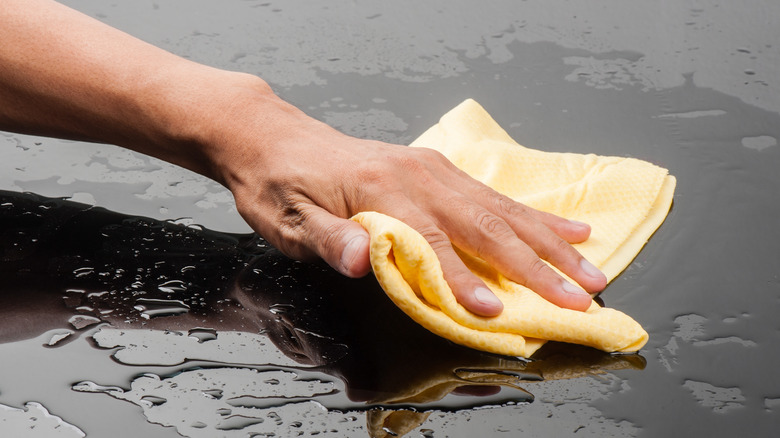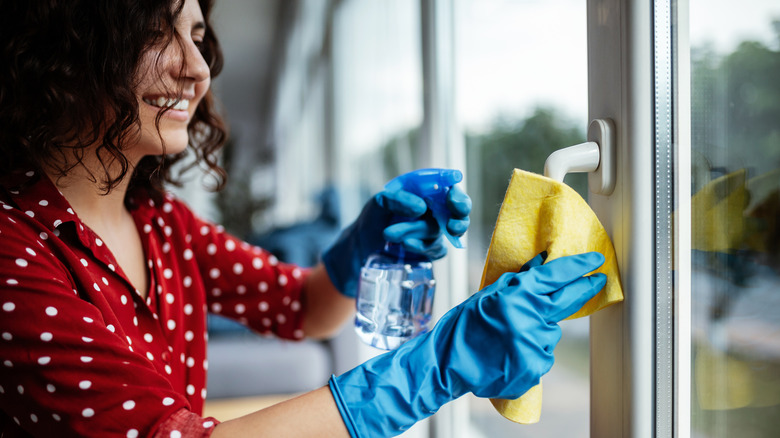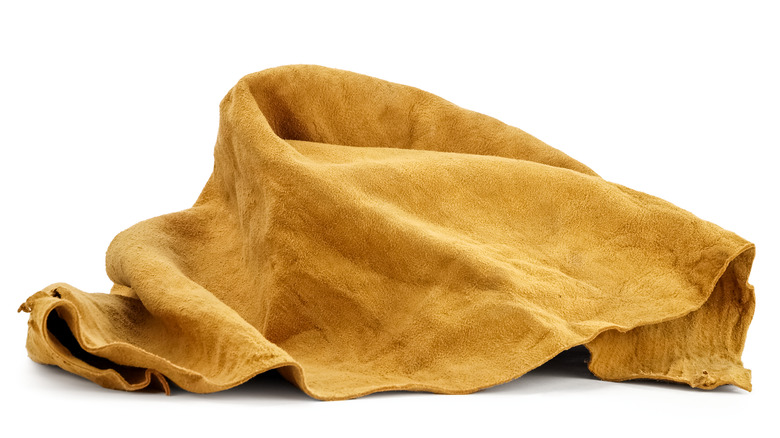The Most Important Place To Use A Shammy That You're Probably Missing
Shammy? Or chamois? Regardless of the spelling, you're probably familiar with this wonder cloth that's excellent for drying cars after a thorough wash and rinse. This is no big surprise considering how soft and absorbent shammies are. They appear to soak up every drop of moisture without leaving a single streak or scratching the paint. But have you ever wondered if a chamois could be applied to any other delicate surface in your home that requires careful polishing? In addition to vehicles, you might be surprised to find out not only the shammy's origins but also how it comes in handy for other household chores.
As mentioned in the Old Bull Lee blog about shammies, the chamois leather is actually made from the hide of goats or sheep. This would explain its ultra-smooth texture and stretchy quality when damp. You can also find a synthetic version that is tightly woven from cotton and is also known for its absorbency and durability. Read on to find out which other areas in your home could use a good wipe-down with a shammy.
The most important place to use a shammy
One of the most important places you can use a shammy is your windows. Finding the best material for window cleaning proves to be quite the conundrum. You need a soft cloth but one that doesn't leave lint behind on the glass. At the same time, paper towels can scratch even if some brands are softer than others. Thus, the perfect fit for the job is the shammy.
Better yet, according to Consumer Reports, this chore needs to be completed only once or twice a year. First, spray your windows with a solution of 1/4 cup of ammonia, 1 cup of rubbing alcohol, and 3.5 pints of water, then gently wipe with a damp sponge. Next, run a squeegee across the windows and use a damp shammy to wipe off any excess moisture and streaks. You can also use a damp sponge to clean stained glass windows and then polish them with shammy which will give them a nice shine without scratching. Plus, shammies are soft enough to clean painted glass without damaging the coating.
Why does a shammy work so well?
How exactly does a chamois leather work? The hide's traits of softness and absorbency contribute to its ability to soak up water without having to wring it out constantly, notes Towel Supercenter. Furthermore, its smooth surface guards against scratching — so long as you keep the shammy damp. One important tip to keep in mind is that a dry shammy should never be used because, without moisture, it loses its softness and elasticity.
When you combine all of these characteristics together, you not only have an excellent material for drying but also for shining and polishing. This versatility makes a shammy useful for many other routine cleaning tasks in the home. Try using a shammy to remove fingerprints from black appliances and countertops, to clean oven doors and glass stove tops, or on your bathroom mirrors and shower doors, suggests Simply Good Stuff.


